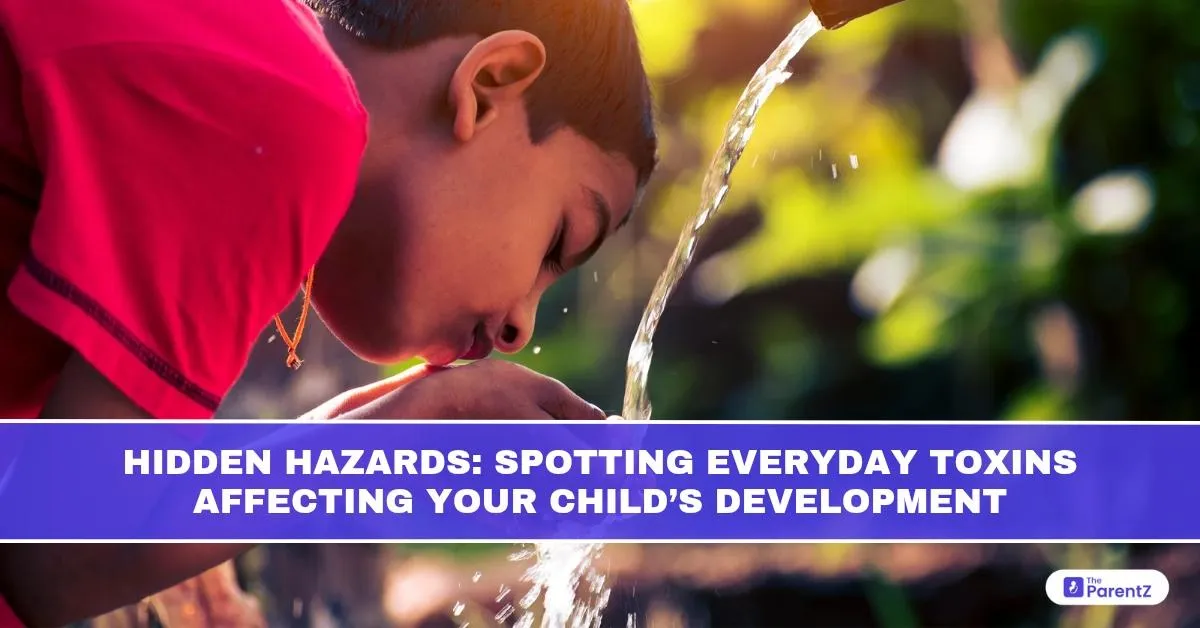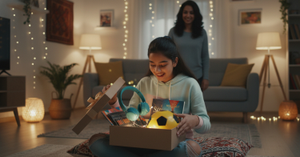Imagine your child’s brain as a busy construction site every day, millions of tiny workers are building the pathways that help them learn, grow, and thrive. But what if, without realizing it, harmful chemicals from the environment are sneaking into that construction site and causing damage?
This is not science fiction. Every day, children can be exposed to hidden toxins and chemicals found in everyday household items, such as plastics, cleaning products, food, and even the air they breathe. These chemicals can interfere with brain development, learning abilities, and overall health. But the good news? With awareness and minor changes, you can protect your child from these invisible threats.
What Are These “Toxins” Anyway?
Toxins are harmful chemicals that, in small doses, might not seem like a big deal, but over time, they can build up in the body and cause problems. For children, who are still growing and developing, even tiny amounts of certain toxins can have a big impact.
Some common toxins to watch out for include:
Lead: Found in old paints, contaminated dust, some toys, and even some spices. Lead can affect brain development, learning, and behavior.
Phthalates and BPA: Chemicals used to make plastics soft or hard. Found in plastic toys, bottles, and food containers. They can interfere with hormone levels and may impact growth and brain development.
Pesticides: Chemicals used on fruits, vegetables, and grains to kill pests. It can affect the nervous system and may increase the risk of attention problems in kids.
Flame Retardants: Used in furniture, mattresses, and electronics to prevent fires, but they can leach into the air and dust, affecting brain development.
Heavy Metals (Mercury, Arsenic, Cadmium): Can be found in some seafood, contaminated water, and certain herbal remedies. These metals are harmful to the brain and nervous system.
Air Pollutants: Dust, smoke, and chemical fumes from cleaners, perfumes, or paints can trigger asthma, allergies, and may affect brain health.
How Do These Toxins Affect Your Child’s Development?
Children are not just small adults, they breathe more air, eat more food, and drink more water relative to their body size. Plus, their organs, like the brain, lungs, and immune system, are still developing. This makes them more sensitive to environmental toxins.
Here’s how toxins can affect kids:
Brain and Learning: Lead, pesticides, and certain chemicals can harm brain cells, slow down learning, and affect memory and focus.
Breathing and Lungs: Chemicals in the air can irritate the lungs, cause asthma, or make infections more likely.
Hormone Health: Some chemicals, called endocrine disruptors, can mimic or block natural hormones, leading to problems with growth, puberty, and even behavior.
Immune System: Toxins can make kids more vulnerable to infections and allergies.
Where Are These Hidden Hazards Found?
Let’s play detective! Here’s where toxins like to hide:
At Home:
- Old, peeling wall paint (may contain lead)
- Dust on furniture and floors (can contain flame retardants and phthalates)
- Plastic toys, bottles, and food containers (may contain BPA or phthalates)
- Scented candles, air fresheners, or cleaning sprays (can release harmful VOCs)
In Food:
- Fruits and vegetables sprayed with pesticides
- Processed foods with artificial colors, preservatives, or sweeteners
- Fish like tuna and swordfish (may have mercury)
In the Environment:
- Polluted air near traffic-heavy roads
- Contaminated water sources.
Simple Steps to Reduce Your Child’s Exposure
Don’t worry, you don’t have to turn your life upside down! Small changes can make a big difference. Here’s how to create a safer, healthier home:
- Clean Smart: Use a damp cloth to wipe dust, mop floors regularly, and vacuum with a HEPA filter.
- Go Natural: Choose natural cleaning products like vinegar, baking soda, or lemon instead of harsh chemical sprays.
- Wash Fresh Produce: Rinse fruits and vegetables under running water, or use a vinegar solution to reduce pesticide residues.
- Choose Safer Plastics: Look for BPA-free and phthalate-free labels. Avoid microwaving food in plastic containers.
- Filter Drinking Water: Use a water filter if your area has contamination issues.
- Ventilate Your Home: Open windows regularly to let fresh air in and reduce indoor air pollution.
- Check Labels: For toys, clothes, and furniture, choose options labeled “non-toxic,” “BPA-free,” or “low-VOC.”
- Be a Food Detective: Limit processed snacks, opt for whole foods, and check labels for artificial additives.
- Get Kids Involved: Teach them to read labels, help clean safely, and understand how their choices impact their health and the planet!
Fun, Healthy Habits for the Whole Family
Grow Your Own: Start a small vegetable patch or herb garden; kids love to grow (and eat!) their food.
DIY Toys: Make your playdough or crafts with natural materials safer and more fun!
Nature Time: Spend time outdoors in green spaces; fresh air is a natural detox for the body.
Toxin Treasure Hunt: Turn learning into a game, find and replace one hidden toxin in your home every week!
The Takeaway: Awareness Is Power
You can’t see or smell many of these toxins, but knowing they exist and where they hide gives you the power to protect your child. By making small, thoughtful changes in your daily life, you’re creating a safer, healthier world for your child to grow, learn, and thrive in.
Remember, it’s not about being perfect, it’s about doing what you can, one step at a time. And every step you take helps build a future where kids can play, dream, and grow without hidden hazards holding them back.








Be the first one to comment on this story.